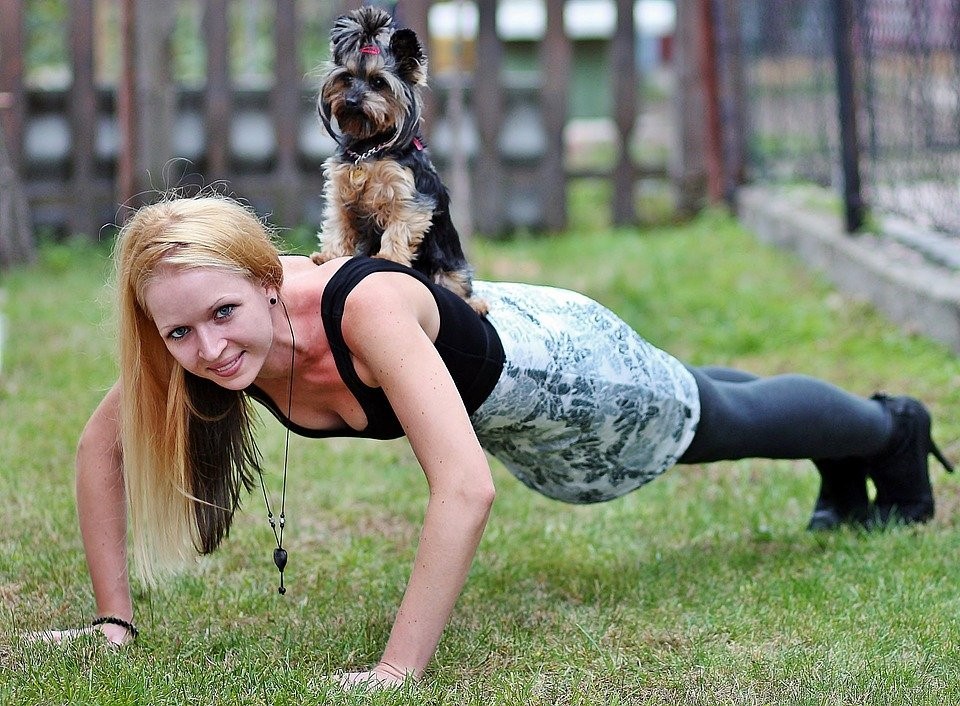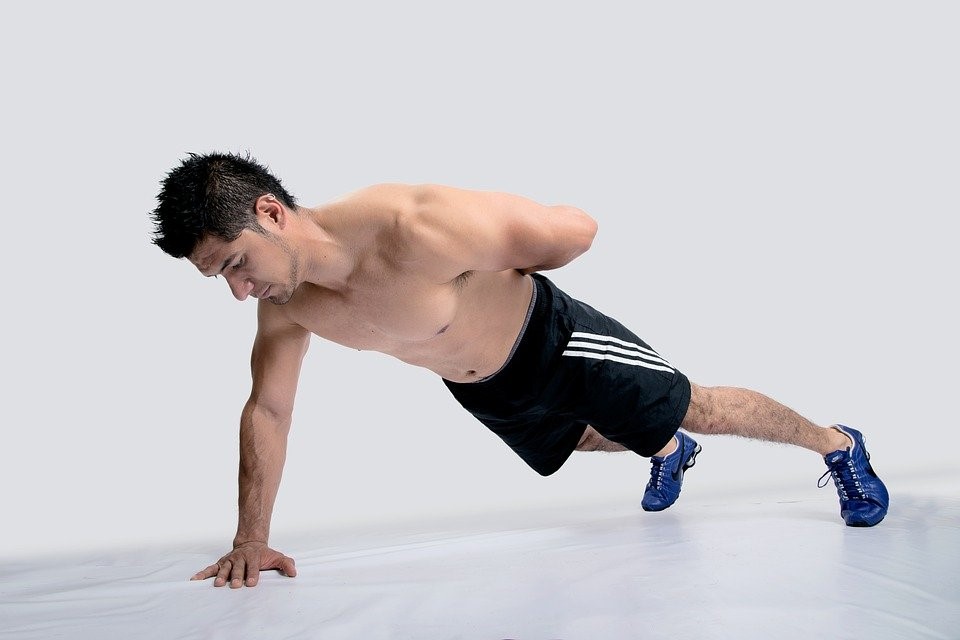Last Updated on October 26, 2022 by admin
There’s a very good chance that the first time you tried doing push ups you breezed right through the first ten. You probably thought to yourself that push ups aren’t that difficult, and you didn’t quite understand where everyone you knew couldn’t stop wailing about how they couldn’t possibly do 50 in a row.
You probably said to yourself that you were going to embark on push up progression; do 100 every day until you were as buff as that guy on the cover of your favorite sport’s magazine.
Then you tried going at it again the next day, and your entire upper body imploded. You felt like your arms completely locked up overnight and that your body weight somehow doubled in your sleep. And that was probably the last time you tried anything that crazy.
At least that the story for most people.
Push ups are an excellent way to not only use your body weight to gain muscle but also to define those muscles. You can tone your arms, back and even core depending on the variation of push up you employ.
However, since it’s primarily a bodyweight exercise, simply adding on the numbers will help but not as much as you would think.
To gain the most from this kind of exercise, you need to employ various push up progression techniques, and that’s exactly what we will cover here today.
Making Use of Push Up Progression to Gain Strength
The idea behind slow eccentric push ups for strength isn’t about adding the number of push ups you do every day; that isn’t going to do much in the way of building up your strength.
It will, however, work wonders for your tone. If it’s strength you are after, then you have to get creative with your push ups. This often involves more than just loading more weight but also targeting different muscles.
You could do this with:
- Chains
- Weight plates
- Resistance bands
- Your kids
You name it…loading up weight can be as fun and as eccentric as you like it to be. That being said, a huge chunk of the benefits you get will come from the different push up variations and techniques you employ. Here are some of the most effective you could consider.
Changing Your Push Up Tempo
It’s no secret that doing push ups the right way works a wide range of muscles and body parts from start to finish. Changing your tension throughout this motion could help increase your gains in many of these isolated parts.
For example, if you decide to slow down your push up tempo on your way down and maybe even load it up with weight plates, you will increase the tension on your arms and chest muscles.
Iso-holding for a few seconds when you get to the mid-point of the push up will increase tension and develop strength at the joint angles. Holding when at the bottom of the push up will create more mechanical tension in this stretched position.
You could decide to have explosively faster push ups to activate most of your upper body or go much slower to keep your form tight and get the most of every contraction, which allows you to gain muscle faster.

Emphasize Different Muscles
Regular push ups tend to call upon the bigger muscle groups such as your chest and your triceps, which could get overworked at the expense of smaller, less targeted muscles in your upper body. Changing the variations of your push ups allows you to target these seldom-activated muscles.
For example, when you are doing a regular push up that involves horizontal pressing, your chest will get stronger and more sculpted with time. However, your shoulder strength won’t develop or get stronger at the same pace.
To achieve this, you would need to change your push up variation and frequently perform those that involve vertical pressing patterns such as push-back push ups.
These tend to be more vertical, a bit more difficult to do, and target your shoulders and upper chest. You could make things more interesting by wearing a weighted vest to add the load.
Change Leverages
Have you ever noticed that some trainers tell beginners to do push ups on their knees? You hear them say that it will still give them the desired effect until they can perform a full push up which will pack more of a punch.
While this might seem strange to a novice, the simple truth is that when it comes to push ups, all you are doing is manipulating leverages to get the most or least resistance and corresponding gains. That’s why doing knee push ups, although still beneficial, aren’t as beneficial as doing a regular push up.
To make use of this theory and target different muscle groups and create push up progression effects, find creative ways to shift that leverage when doing knee push ups.
Going from your knees to your toes loads you up with about 15% more bodyweight in resistance and, therefore, potential gains.
You can go ballistic on this and do a handstand push up with your feet upright on a wall. A handstand push up will load you up with much more of your own bodyweight than a standard push up in plank position and so on.

Add Movement Complexity
Any time you introduce or take away a point of contact with the ground when doing a push up, you play around with your stability, which calls a host of different muscles into play.
The thing you need to know about this is that whenever you introduce instability into any form of body-building exercise, you are taking the focus away from the main targeted muscles.
For example, if you made your regular push ups a bit more complex, you will take away the focus from your chest and arms and portion some of that onto your stabilizer muscles, such as the serratus anterior.
While this does deprive you of the necessary big muscle group activation and the gains that come with it, it does help build up your strength overall.
Increase the Range of Motion
It should be noted that increasing the range of motion in your push ups also increases your chances of tweaking your shoulder blade or elbows.
However, when done with progression and care, it can be a great way to stretch your muscle mass further and increase muscle strength and size.
Have you ever noticed how difficult dips are the lower you go? That’s the same principle that applies to increasing your range of motion when doing push ups.
Instead of regular push ups on a flat surface, you could introduce a raised platform that will allow you to go lower and stretch your chest even further. This provides you with an excellent opportunity to load your chest up when it’s working the hardest at the bottom of the push up.
You could try a wide range of styles when trying to achieve push up progression to develop strength.
Of course, what you try fully depends on your fitness levels and what group of muscles you want to target. Going for a one-handed push up is an excellent way to incorporate unilateral progression.
These types of pushups often seem harder than they really are because they challenge your typical stability and call into play a host of muscles that normally don’t have much to do during a regular push up. You could also choose to incorporate non-push up movements into your routine.
Burpees, for example, involve doing regular push ups albeit at a rather explosive pace. Not only do exercises such as these help you develop your upper body strength, but they also call your legs, torso, and cardiovascular system into play. It’s all about finding the right creative combination without getting injured.

